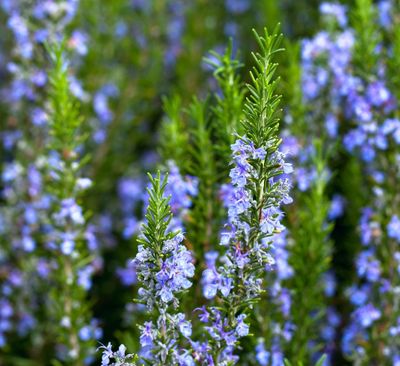Choosing Hardy Rosemary Plants
Rosemary is an evergreen perennial in zones 9 or higher native to the Mediterranean. Upright varieties of rosemary are considered more cold hardy than prostrate varieties. Rosemary prefers to grow in hot, arid climates with intense sunlight. They cannot tolerate wet feet, so proper drainage is essential. In cooler zones, rosemary is usually grown as an annual or in a container that can be moved outdoors in summer and taken indoors for winter. Prostrate rosemary plants are used in hanging baskets or planted to cascade over the lips of large pots or urns. In the zone 7 garden, careful selection of the hardiest rosemary plants are used as perennials, with extra steps taken to ensure their survival through winter. This can be done by placing the plants near a south-facing wall where light and heat from the sun will reflect and create a warmer microclimate. Rosemary plants also need a thick layer of mulch for insulation. Frost and cold may still nip the tips of rosemary plants, but cutting rosemary back in spring can clean up this damage and also makes the plants fuller and bushier.
Rosemary Plants for Zone 7
When growing rosemary in zone 7, you may be better off treating it as an annual or houseplant. However, if you garden as I do, you probably like to push the envelope and enjoy a challenge. While zone 7 rosemary plants will not receive enough heat and sunlight to grow as full and massive as plants in their native location or U.S. zones 9 or higher, they can still be beautiful additions to zone 7 gardens. ‘Hill Hardy,’ ‘Madeline Hill,’ and ‘Arp’ are rosemary varieties that have been known to survive outdoors in zone 7 gardens.
